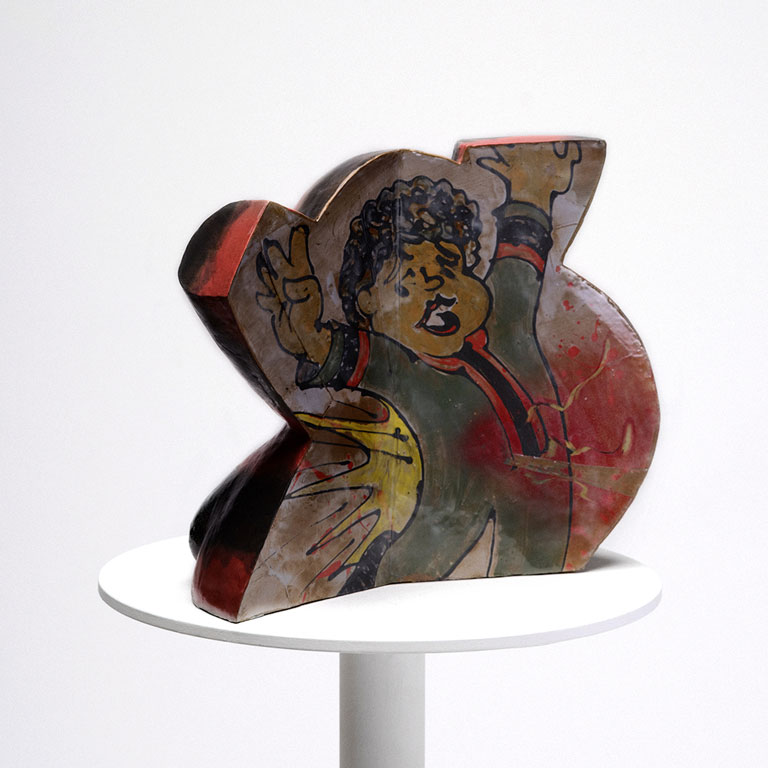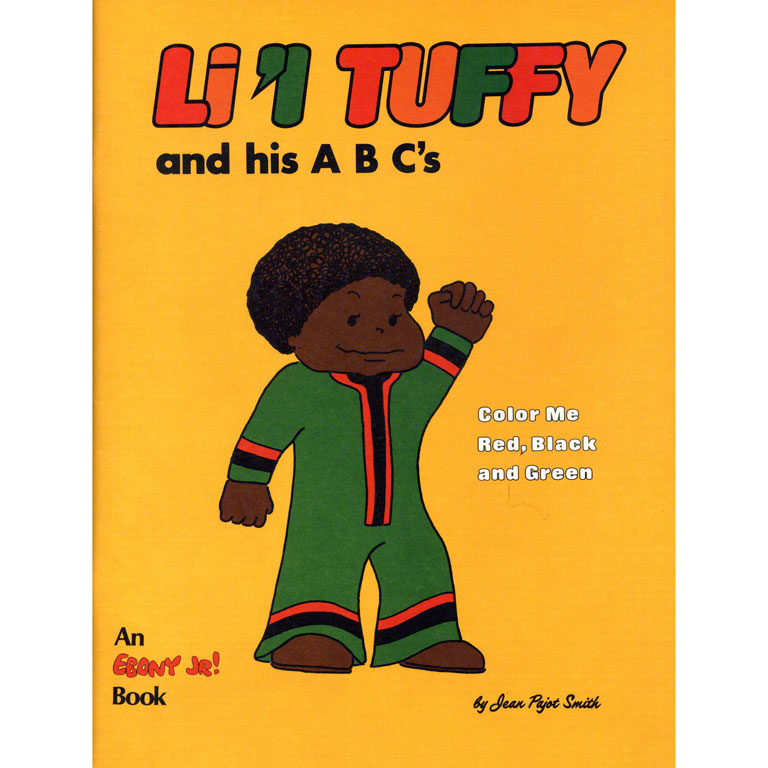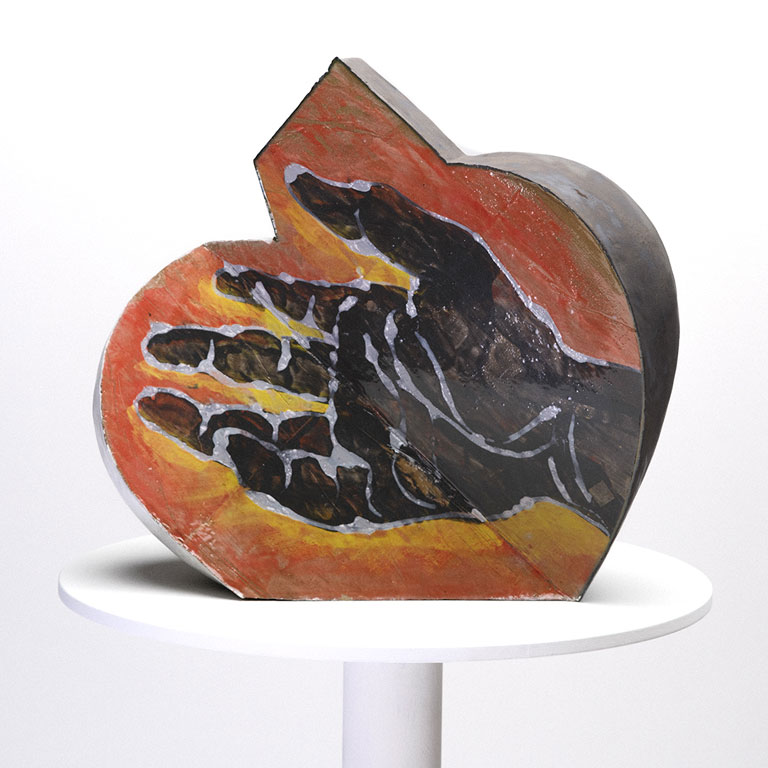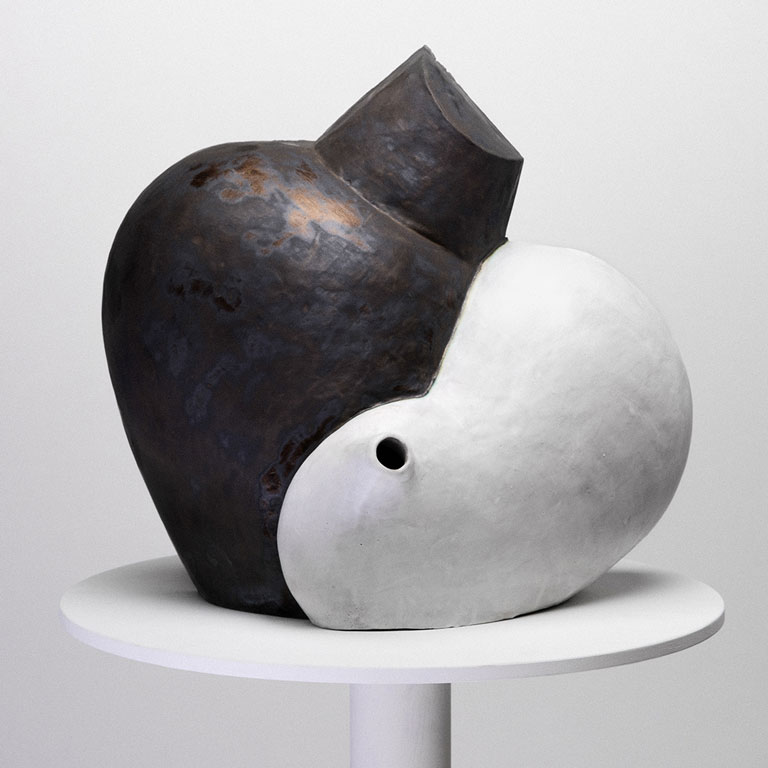“Evermore Nevermore,” Associate Professor Malcolm Mobutu Smith’s recent exhibition of ceramic sculpture at the Hunterdon Art Museum culminated with a collaborative dance experience by the Roxey Ballet April 23. The troupe performed to a soundtrack that included personal monologues about each dancer’s lived experience of diversity and discrimination, as a complement to themes raised in Smith’s work on view at the museum.

During the performance, Smith and the ballet company’s artistic director Mark Roxey took questions from a dancer dressed in homage to “Li’l Tuffy,” a recurrent motif in Smith’s work. A Black child in a red, green and black jumpsuit, the character created in her children’s multiracial image by Smith’s mother Jean Pajot Smith was featured in two children’s books first published by Johnson Publishing/Ebony Jr! Books in the 1970s.

Held on a terrace named for the late Toshiko Takaezu, a renowned clay artist long affiliated with the Hunterdon, the performance was one of several events programmed in coordination with Smith’s exhibition at the Clinton, New Jersey museum, January 23-April 24, 2022. In addition, Smith offered a virtual artist’s talk and participated in the Jersey Arts Podcast, which is accessible from the museum’s website. An associate professor of ceramics in the Eskenazi School of Art, Architecture + Design, Smith also serves as director of graduate studies (Bloomington).
The long-debated merits of “dancing about architecture” notwithstanding, affinities between the Roxey Ballet’s dance performance and Smith’s exhibition of stoneware sculptures were manifold. Together with shared themes of diversity and discrimination, the performance amplified references to the body, movement, and musicality contained in Smith’s work. In his artist’s statement at the Hunterdon website, Smith traced the origins of the work on view:
“Born of the anxieties, fears, and uncertainties emanating from ongoing social-political frictions, I felt an urgent and guttural need to respond through my work. The works here are a continuation of series begun over a decade ago as we greeted, through grinning-yet-gritted teeth, our first Black president. Despite, or unfortunately, precisely because of this achievement, it peeled back the thin veil hiding the hate pulsing and coursing and seething through the body of our country … Evermore Nevermore offers deadpan, sardonic totems as reflections of a festering hate-filled past to a confused and unrepentant present.”
Smith’s work communicates painful histories via disparate, strategically juxtaposed formal references, as the artist also described:
“The structure of the work somewhat suggests a formal connection to modern art tropes, neatly packaged within the autonomous art object. The contours of the work’s bold, simple silhouettes and monolithic stance are jazzy improvisations of line derived from vessel shapes. The volumetric portions are meant to stand apart as stoically beautiful. In contrast, I use the trappings of Modernist Formalism and Pop Culture’s expressions of line pulled from cartoon and comic book vernacular to deploy these emotionally charged images with cynicism. The images “unfold” on the opposing side of the abstract forms. These images, hidden on the other side, reveal the within of the vessels. The works are contradictions, challenging beautiful form, line, color, and design, while being wrapped in disturbing and ugly symbols of our racist reality!”


At the same time, hopeful symbols such as the Black Pride icon of Li’l Tuffy recur throughout Smith’s work. The artist plans to collaborate with the Roxey Ballet on future performances inspired by his sculptures and his childhood avatar.
For more information please contact
Yaël Ksander
Eskenazi School of Art, Architecture + Design
(812) 855-5512
yksander@iu.edu

